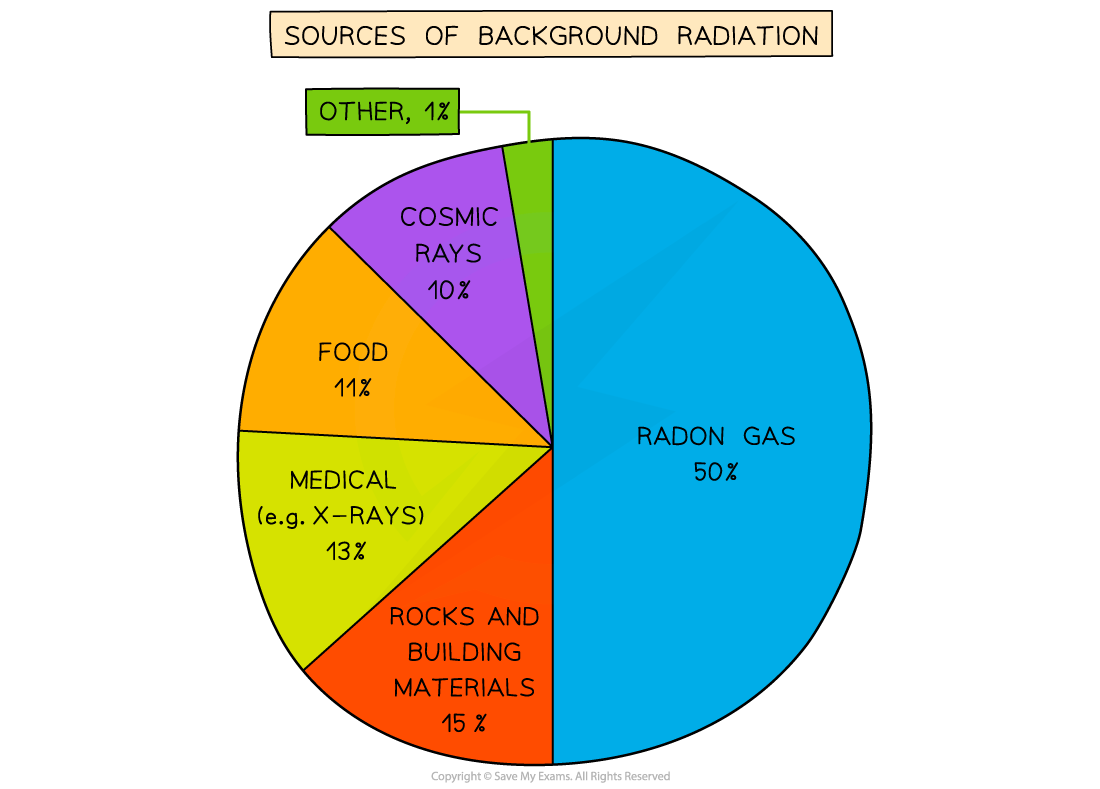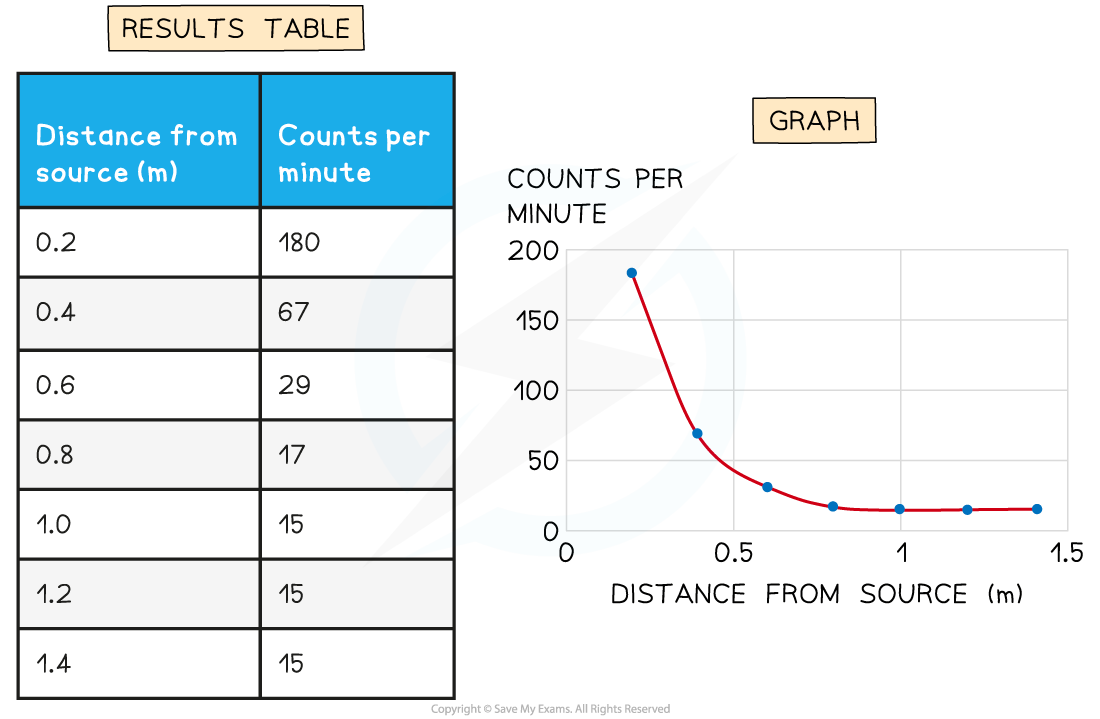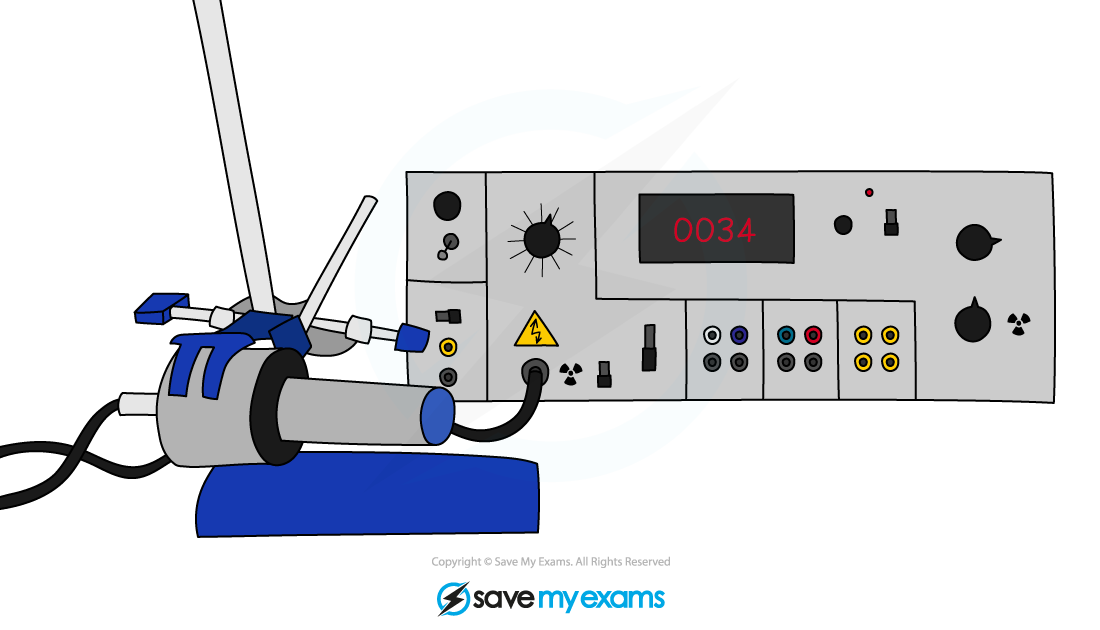Background Radiation
- It is important to remember that radiation is a natural phenomenon
- Radioactive elements have always existed on Earth and in outer space
- However, human activity has added to the amount of radiation that humans are exposed to on Earth
- Background radiation is defined as:
Background radiation describes the low level of radiation present in the surroundings at all times
- There are two types of background radiation:
- Natural sources
- Man-made sources

Background radiation is the radiation that is present all around in the environment. Radon gas is given off from some types of rock
- Every second of the day there is some radiation emanating from natural sources such as:
- Rocks
- Cosmic rays from space
- Foods
Origins of Background Radiation
- Background radiation can come from natural sources on Earth or space and man-made sources
Natural Sources
- Radon gas from rocks and soil
- Heavy radioactive elements, such as uranium and thorium, occur naturally in rocks in the ground
- Uranium decays into radon gas, which is an alpha emitter
- This is particularly dangerous if inhaled into the lungs in large quantities
- Cosmic rays from space
- The sun emits an enormous number of protons every second
- Some of these enter the Earth’s atmosphere at high speeds
- When they collide with molecules in the air, this leads to the production of gamma radiation
- Other sources of cosmic rays are supernovae and other high energy cosmic events
- Carbon-14 in biological material
- All organic matter contains a tiny amount of carbon-14
- Living plants and animals constantly replace the supply of carbon in their systems hence the amount of carbon-14 in the system stays almost constant
- Radioactive material in food and drink
- Naturally occurring radioactive elements can get into food and water since they are in contact with rocks and soil containing these elements
- Some foods contain higher amounts such as potassium-40 in bananas
- However, the amount of radioactive material is minuscule and is not a cause for concern
Man-Made Sources
- Medical sources
- In medicine, radiation is utilised all the time
- Uses include X-rays, CT scans, radioactive tracers, and radiation therapy
- Nuclear waste
- While nuclear waste itself does not contribute much to background radiation, it can be dangerous for the people handling it
- Nuclear fallout from nuclear weapons
- Fallout is the residue radioactive material that is thrown into the air after a nuclear explosion, such as the bomb that exploded at Hiroshima
- While the amount of fallout in the environment is presently very low, it would increase significantly in areas where nuclear weapons are tested
- Nuclear accidents
- Accidents such as that in Chernobyl contributed a large dose of radiation into the environment
- While these accidents are now extremely rare, they can be catastrophic and render areas devastated for centuries
Corrected Count Rate
- Background radiation must be accounted for when taking readings in a laboratory
- This can be done by taking readings with no radioactive source present and then subtracting this from readings with the source present
- This is known as the corrected count rate
Worked Example
A student is using a Geiger-counter to measure the counts per minute at different distances from a source of radiation. Their results and a graph of the results are shown here. Determine the background radiation count.
Determine the background radiation count.
Step 1: Determine the point at which the source radiation stops being detected
- The background radiation is the amount of radiation received all the time
- When the source is moved back far enough it is all absorbed by the air before reaching the Geiger-counter
- Results after 1 metre do not change
- Therefore, the amount after 1 metre is only due to background radiation
Step 2: State the background radiation count
- The background radiation count is 15 counts per minute
Detecting Radiation
- When radiation passes close to an atom, it knocks out electrons, ionising the atom
- Radiation detectors work by detecting the presence of these ions or the chemical changes that they produce
- Examples of radiation detectors include:
- Photographic film (often used in badges)
- Geiger-Muller (GM) tubes
- Ionisation chambers
- Scintillation counters
- Spark counters

A Geiger-Muller tube (or Geiger counter) is a common type of radiation detector
